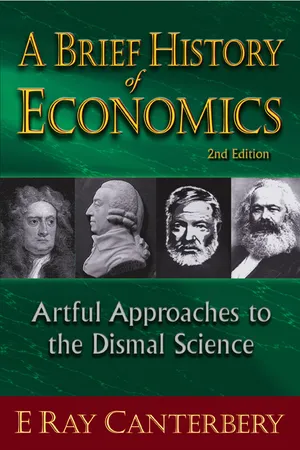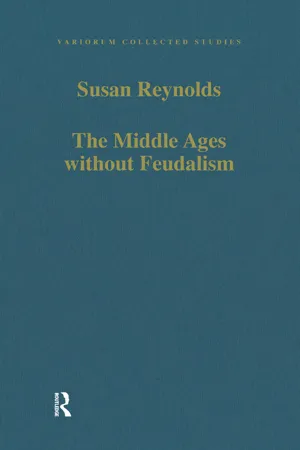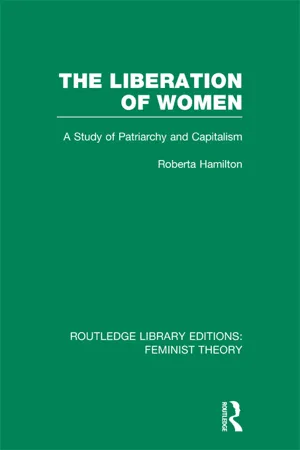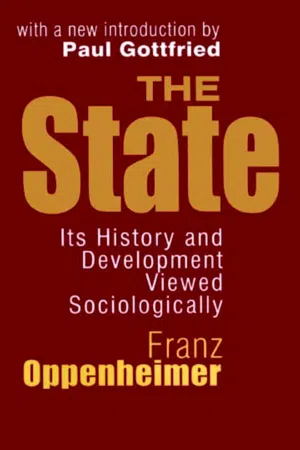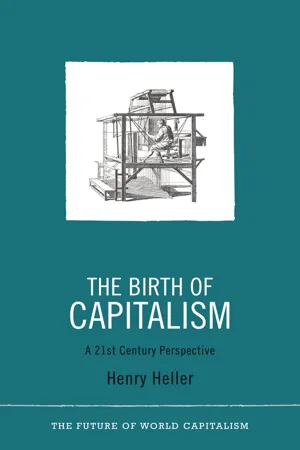History
The Abolition of Feudalism
The abolition of feudalism refers to the gradual dismantling of the feudal system, which was a social and economic structure based on land ownership and obligations between lords and vassals. This process occurred in various countries during the late medieval and early modern periods, leading to the decline of feudal privileges and the emergence of more centralized forms of governance and economic relationships.
Written by Perlego with AI-assistance
Related key terms
Related key terms
1 of 4
Related key terms
1 of 3
11 Key excerpts on "The Abolition of Feudalism"
- eBook - ePub
The Political Economy of Nation Building
The World's Unfinished Business
- Mack Ott(Author)
- 2017(Publication Date)
- Routledge(Publisher)
As technology advanced and monetary payments substituted for fixed allocations of men, material and land, the structure of feudalism disintegrated. Fixed land ownership, serfdom, and a barter military system were replaced by fee simple land title, laissez-faire markets in labor and goods, and a paid military. Central to this was the rise of towns and cities—particularly London, Bristol and York—which transformed England from a barter-based agricultural economy of self-sufficient manors into a network of markets whose interdependence was based on monetized trade. The focus in what follows is an elaboration of how technology shapes society and creates markets, and how markets expand freedom; the contribution of financial arrangements to this evolution is addressed in Chapter 4. Feudalism was a highly centralized form of production organization with wealth and power very concentrated, inflexibly organized, with both production and military services based on barter exchange and with involuntary servitude at its labor base. Feudal relations were hierarchical and governed land tenure and controlled the lives of most peasants who were tied to the manors, which comprised nearly 90 percent of the estimated population of England in 1086. The urban population was about 10 percent, and more than half of national output was produced on the lords’ own demesnes of their estates. Nevertheless, even in this barter/planned economy, there was substantial market activity involving both manor and urban producers and peasant farmers: About 40 percent of the economy was involved in market activity—that is production sold to buyers in markets rather than produced for own consumption - eBook - ePub
- Maurice Dobb(Author)
- 2012(Publication Date)
- Routledge(Publisher)
One Transition from feudalism to capitalism DOI: 10.4324/9780203120859-1The question of what was the nature and what were the moving forces of the decline of Feudalism as an economic system, and what connection had this decline with the birth of modern Capitalism, is not entirely without interest, I think, for many underdeveloped countries today. However, it is in the context, rather, of historical interpretation that I want to deal with this question here. For historical interpretation, at any rate for one that attaches primary importance to distinctive modes of production in defining stages in the historical process, a true understanding of this crucial transition is, I believe, essential. Moreover, without it much in our definition of Capitalism as a mode of production, as well as of its origins, must inevitably remain blurred and unclear.I should perhaps explain that when I talk about Feudalism, I am not referring to this as a juridical form or set of legal relations; I am speaking of it primarily as a socio-economic system. But in looking at it in this light, I do not wish to identify it with Schmoller’s ‘natural economy’, even if it be true that trade and money-dealings (certainly long-distance trade) occupied a smaller place in this type of economy than in others, both preceding and succeeding it. I refer to it as a system under which economic status and authority were associated with land-tenure, and the direct producer (who was himself the holder of some land) was under obligation based on law or customary right to devote a certain quota of his labour or his produce to the benefit of his feudal superior. Regarded in this way, as a system of socio-economic relations, it is almost identical with what we generally mean by serfdom; provided that we do not confine the latter to the performance of direct labour services (on the lord’s estate or in his household) but include in it the provision of tribute or feudal rent in produce or even in a money-form. Using Marc Bloch’s phrase, it implies the existence of ‘a subject peasantry’: he goes on to say, ‘the feudal system meant the rigorous economic subjection of a host of humble folk to a few powerful men … the land itself (being) valued because it enabled a lord to provide himself with “men”’. To which Bloch added: ‘whatever the source of the noble’s income, he always lived on the labour of other men’. Summing it up we can say that the differentiating feature of this type of exploitation is accordingly that the sanction behind it, whereby it is enforced and perpetuated, is so-called ‘extra-economic in some form. - eBook - ePub
A Brief History of Economics
Artful Approaches to the Dismal Science
- E Ray Canterbery(Author)
- 2010(Publication Date)
- WSPC(Publisher)
Because of the major social and political disruptions at the end of the fifth century, law and order began to crumble. Citizens of the empire could no longer rely on Roman centralized control and legal authority for protection. Furthermore, much of Greco-Roman knowledge was lost with the collapse of the political order.A BRIEF HISTORY OF THE DEVELOPMENT OF FEUDALISMBy the end of the sixth century, Europe was profoundly uncivilized. To be “free,” one had to be a warrior and have weapons. War was a common form of economic activity. Pillaging (then a form of economics and politics) included the acquisition of cattle, ornaments, and slaves, as well as weapons for the next assault.But successful aggressors were themselves obvious targets for plunder, and pillage was therefore a poor “solution” to the question of how goods and services could be produced and distributed. People had to be able to hold on to what they had; as a result, mutual self-protection societies began to evolve within the framework of the existing agricultural economy.Feudalism was based upon mutual duties and obligations. One human being was no longer supposed to own another outright (though exceptions were made), but the chains were not completely broken, the bondage being of a different kind. The serf, the lowest person on the feudal economic scale, was bound to the land, retained for himself subsistence, and exchanged service for protection by his master, who, in turn, was given control of both the serf and the all-important land in exchange for service to his master, the king or duke. The nobility provided mutual protection services through those who became knights or warriors. The king atop the social pyramid—be he King Phillip Augustus or King John—was in control of both the land and the serf. The king then could transfer control from one master to another.Among the nobility, marriage, land, and politics were hopelessly intertwined, a condition best explained by noble thirteenth century example. As part of a peace treaty to seal the victory in Normandy of French King Philip Augustus over King John of England in January 1200, a marriage was arranged. John's sister Eleanor had two eligible daughters, 13-year-old Urraca and 12-year-old Blanche (girls were legally mature at age 12 and available for sealing political alliances or gaining property). As royal luck would have it, Louis, the 13-year-old heir to the French crown, was desperately in need of a bride. John's mother and the princesses’ grandmother, Eleanor of Aquitaine, selected Blanche. - eBook - ePub
- Harald Kleinschmidt(Author)
- 2017(Publication Date)
- Routledge(Publisher)
Although it appeared at first that the land reform had decisively revolutionized the self-reinforcement of these two groups, dissolving large-scale landlordism and high rent tenancy and thereby destroying the feudal relationships within the village, actually it did not produce any such fundamental change. To the contrary, recent studies have shown that it resulted in a re-strengthening of feudal relationships under colonial control. 1 American historians who reject this view are apt to be reminded by their Japanese colleagues that they have been spared the onus of living under feudalism and hence cannot appreciate its reality. Certainly the American scholar does not commute through a countryside which to him constitutes a living reminder of "the feudalism of the village". But while we cannot deny the Japanese his emotions of social protest, we can question whether the object of his attack is the same feudal system against which our European forefathers railed. This surely is a problem which can be studied objectively. The question of whether the idea of feudalism can be applied to Japan (or any other society outside Wetsern Europe) has exercised the minds of scholars since the time of Voltaire and Montesquieu. The endless conflict between what we might term the "broad" and "narrow" approaches to this problem has led down to the present generation in which we find a Marc Bloch suggesting the existence of "feudalism as a type of society" or a Bryce Lyon insisting that Western European feudalism is "unique". 2 In the light of this controversy the general historian who has no special stake in the problem is apt to assume a double standard, accepting as popular but misguided the usage that generalizes the term beyond the confines of Europe, and retaining for his own professional purposes a usage which limits the term to Western European societies - eBook - ePub
- P, Boissonnade(Authors)
- 2013(Publication Date)
- Routledge(Publisher)
jacquerie at the hands of a sinister butcher, the great lord Raoul de Fougère. But force was powerless to stop this social fermentation, which was still going on at the beginning of the twelfth century, as the most perspicacious of contemporary observers bear witness. It was the forerunner of the great social and economic revolution, which 200 years later was to transform the whole system of labour.1 Payable on the marriage of a serf to a person belonging to another lord’s estate. See below, p. 138.Passage contains an image CHAPTER III PART PLAYED BY CHURCH AND STATE IN THE TRANSFORMATION OF THE RÉGIME OF PRODUCTION.
THE primary condition necessary to stimulate the activity and progress of labour was the formation of some tutelary authority able to assure the necessary protection and order to the masses.For over two centuries feudal government showed itself powerless to realize this condition. A work of circumstance, which imminent dangers had brought to birth, it left too free a hand to the force and greed of thousands of little local sovereigns, who knew neither faith nor law. The feudal system had undoubtedly brought certain principles of progress into medieval society. In France, above all, from whence it spread all over the West, feudal civilization substituted for the ancient Græco-Roman conception of the omnipotent state, with its absolute power over individuals, the new idea of a political association founded upon liberty and upon the reciprocal obligations of men voluntarily bound together by contract. It favoured the revival of the sentiment of human dignity and individual energy, of voluntary devotion and discipline, of faith and loyalty between suzerains and vassals. Under the influence of the Church the military institution of chivalry was transformed, and for an élite it became a moral and educative force which tended to put might at the service of right, to guarantee public peace, and to protect the labouring masses against violence and anarchy. In the upper ranks of society were born the chivalrous virtues of humanity and courtesy, which resulted from the softening of manners. But this transformation of feudal society had only a limited effect. It had little influence upon the condition of subject classes, and, in fact, liberty remained for the first two centuries of the feudal age limited to the nobility. The terms freeman (liber) and baron or knight (miles - eBook - ePub
The Middle Ages without Feudalism
Essays in Criticism and Comparison on the Medieval West
- Susan Reynolds(Author)
- 2018(Publication Date)
- Routledge(Publisher)
Encyclopaedia Britannica depicted “the intercourse betwixt” lord and vassal before “the romantic ideas of chivalry ceased” as having been “of the most tender and affectionate kind.” Early nineteenth-century historians took over the idea, highly suited as it was to the Age of Romanticism, of knights or vassals living and fighting in a social and political void. The Middle Ages became the age of Feudal Anarchy. Public spirit was assumed to have gone with the end of the Roman Empire, so that historians who were only or chiefly interested in high politics and the relations between kings and nobles, could easily assume that the only or primary bonds of society were those of vassalage.This was the background of historiography against which Marx and Engels worked out their idea of feudalism. Although they both read quite widely in what was then available about medieval history, and therefore started from the picture of feudal society and government drawn by other historians, they were interested in it chiefly as the background or thesis to capitalism’s antithesis.21 They took over the idea of stages of history propounded by Adam Smith and other scholars of the eighteenth century and argued, by an adaptation of Hegel’s dialectic of thesis, antithesis, and synthesis, that what causes the movement from one stage to another is the inevitable conflict between those who work and those who rule them and live off their work. The relations between kings and nobles that had hitherto interested most historians were less important to Marx than were those between landlords and peasants. Serfdom, rather than fiefholding and vassalage, was therefore the defining characteristic of his concept of feudalism. That made it quite different from the concept that his contemporaries had adopted and which many later medieval historians would continue to cherish and elaborate.Throughout the twentieth century, and even into the beginning of the twenty-first, the historiography of medieval Europe has continued to be shaped by the ideas of fiefholding that sixteenth-century scholars derived from late medieval academic law and the ideas of vassalage that eighteenth-century scholars drew from literary sources. As knowledge has expanded, it has been fitted into a framework of feudalism that has been enlarged with very little rethinking. Some medievalists avoid the problem of fitting the phenomena they find or do not find into the enlarged framework represented by Bloch’s and Weber’s definitions by appealing to ideal types, though sometimes without much consideration of how an ideal type should relate to empirical phenomena, or how the varying concepts of feudalism might constitute one.22 - eBook - ePub
The Liberation of Women (RLE Feminist Theory)
A Study of Patriarchy and Capitalism
- Roberta Hamilton(Author)
- 2012(Publication Date)
- Routledge(Publisher)
The bourgeoisie, wherever it has got the upper hand has put an end to all feudal, patriarchal, idyllic relations. It has pitilessly torn asunder the motley feudal ties that bound man to his ‘natural superiors’ and has left remaining no other nexus between man and man … than callous cash payment … The bourgeoisie has torn away from the family its sentimental veil, and has reduced the family relation to a mere money relation. (Marx, 1948, pp. 122–3)The feudal family of all estates had rested on its access to the means and material for the realisation of its labour. The high standard of living of the noble family was additionally, and importantly, due to its right to extract the surplus value produced by the peasant population. As an institution, the feudal family encompassed almost the totality of most people's lives. Both men and women were integrated in the economy of the household, and were dependent on their own and each other's labour for their livelihood. But this integration of men and women within the household had been synonymous with the social relations of feudalism. And the ‘tearing asunder’ of those relations meant the separation of labour and capital, production and consumption, work and home, work and domesticity and public and private lives. What were the processes which began to disturb ‘the feudal, patriarchal, idyllic relations’ between noble and peasant?A cyclical movement was developing between the increase in capital accumulation and the growth in the landless population. The first was possible in part because of the rising food prices resulting from the expanding population of towns and cities (Hill, 1969b, p. 62). But in turn the population of the towns was being drawn from the growing population of landless people seeking to sell their labour. Peasants were being evicted from the land through enclosure laws and through the conversion of the land from tillage to pasture (Hoskins, 1957, p. 178; Everitt, 1967, p. 406; James, 1967, p. 241). The abolition of feudal tenures in 1646 removed the final brakes on this process. Although three-fifths of the cultivated land was still unenclosed in 1642 a rural proletariat of some half million was being caught between the rising prices and the punitive wage structure (Hill, 1969b, p. 147). (Punitive is here meant very precisely. Both Clark and Hill argue that the object of low wages was to eliminate wage labourers as a class. Those who implemented the wage structure might also be capitalists who therefore depended on the availability of such labour. Their fears about the social consequences of a wage-labouring class on the one hand, and their need for it on the other, created this contradiction (Clark, 1919, p. 90; Hill, 1964, p. 63). - eBook - ePub
The State
Its History and Development Viewed Sociologically
- Franz Oppenheimer(Author)
- 2018(Publication Date)
- Routledge(Publisher)
92 and in that publication it was pointed out that in all the instances noted a process takes place, identical in its principal lines of development. It is only on this line of reasoning that one can explain the fact, to take Japan as an example, that its feudal system developed into the precise details which are well known to the students of European history, although Japan is inhabited by a race fundamentally different from the Arians; and besides (a strong argument against giving too great weight to the materialistic view of history) the process of agriculture is on a totally different technical basis, since the Japanese are not cultivators with the plow, but with the hoe.In this instance, as throughout this book, it is not the fortune of a single people that is investigated; it is rather the object of the author to narrate the typical development, the universal consequences, of the same basic traits of mankind wherever they are placed. Presupposing a knowledge of the two most magnificent examples of the expanded feudal state, Western Europe and Japan, we shall, in general, limit ourselves to cases less well known, and so far as possible give the preference to material taken from ethnography, rather than from history in its more restricted sense.The process now to be narrated is a change, gradually consummated but fundamentally revolutionary, of the political and social articulation of the primitive feudal state: the central authority loses its political power to the territorial nobility, the common freeman dnks from Us status, while the “subject” mounts.(b) THE CENTRAL POWER IN THE PRIMITIVE FEUDAL STATE
The patriarch of a tribe of herdsmen, though endowed with the authority which flows from his war-lordship and sacerdotal functions, generally has no despotic powers. The same may be said of the “king” of a small settled community, where, generally speaking, he would exercise very limited command. On the other hand, as soon as some military genius manages to fuse together numerous tribes of herdsmen into one powerful mass of warriors, despotic centralized power is the direct, inevitable consequence.93 - J.Q.C. Mackrell(Author)
- 2013(Publication Date)
- Routledge(Publisher)
Feudalism was usually seen to start with an idyllic phase when fiefs were the recognized reward for public services and personal merit. The moment when the nobles were reputed to have profited from the weakness of the Crown, to make the tenure of their lands and offices hereditary, was taken to mark the beginning of the ‘feudal anarchy’. Finally, as I will try to show shortly, the ‘feudal anarchy’ was supposed to have been ended through the alliance of king and communes for their mutual protection against the feudal nobility. 1 The average historian or publicist of the eighteenth century, however, had no more understanding of the development of feudalism than his counterpart today has of the development of democracy. The theory which is carefully worked out is, doubtless, the exception in any age. One writer, however, who came near to providing an overall history of feudalism was Letrosne. By profession, he was avocat du roi at the bailliage and présidial of Orléans for most of his adult life. 2 Because of his occupation and his position as one of the leaders of the physiocrats, Letrosne is in danger of being written off, with less justification than most of his fellow economists, as a man of affairs who dabbled in ideas. Yet, the unprejudiced reader will almost certainly be impressed by the Dissertation sur la féodalité, which was published for the first time with De l'Administration provinciale in 1779. Letrosne distinguished three separate ‘ages’ in the development of feudalism. The first, which he labelled its ‘origin’, he described as ‘a means of administration, and a way of repaying public service’, when it consisted solely in fighting for the king. 3 It was during the second ‘age’, the ‘reign’ of feudalism, that in Letrosne's view it entirely changed its character. The decisive moment, he implied, was when fiefs became hereditary as a matter of course, and no longer just in exceptional cases. 4 As a result, seigneurs escaped altogether 1 See pp. 39–40. 2 L.-G- eBook - ePub
The History of Democracy
A Marxist Interpretation
- Brian S. Roper(Author)
- 2012(Publication Date)
- Pluto Press(Publisher)
9 The crisis of feudalism during the fourteenth and fifteenth centuries was followed by a period of recovery from the mid-fifteenth to the end of the sixteenth centuries and then another major crisis in the seventeenth century. These crises prompted a generalized intensification of class struggle, which ultimately produced different outcomes across Europe. In Eastern Europe the nobility successfully expropriated the lands of peasant freeholders and tightened the grip of serfdom over the peasantry. In France and western Germany serfdom was successfully overthrown by the peasantry but peasants then became subject to the extraction of surplus from the absolutist state (in addition to the rents that many peasants still had to pay to local lords and the tithes that almost all peasants owed to the church). In England the outcome of the first generalised crisis of feudalism was the creation of conditions conducive to the emergence of capitalism: the gradual of achievement of absolute property ownership of land by the nobility, but a nobility which increasingly derived its income from the rents paid by capitalist tenant farmers, who in turn were able to exploit the growing class of agricultural wage labourers (Brenner, 1985, 1990, 2003a, 2007). It is worth focusing in more depth on France and England because the remainder of this chapter and the next focuses on the revolutions that subsequently unfolded in these two countries.French absolutismThe absolutist state in France emerged from the crisis and class struggles of the fourteenth and fifteenth centuries.10 It was developed as a response by the monarchy and sections of the ruling class to the peasant gains that:were significant at the beginning of the fifteenth century; in many areas of France, village communities had won corporative status and the right to enforce their claims to common lands. In addition, individual peasants had won heritability rights over their tenures. ... In short, for the peasantry as a whole this was a period of significant prosperity and economic advance. - eBook - ePub
The Birth of Capitalism
A 21st Century Perspective
- Henry Heller(Author)
- 2011(Publication Date)
- Pluto Press(Publisher)
6Modern discussions of feudalism have been plagued by long-drawn-out controversies over its conceptualization. These disputes have centred on whether feudalism should be thought of in essentially political and legal or socio-economic terms.7 As a Marxist Dobb adopted the third perspective while trying not to not lose sight of the political. According to him, the feudal mode is defined as the extra-economic extraction by overlords of rents or services from a class of subsistence producers. The peasant producers largely control the process of production but are not legally free. Feudalism and serfdom are synonymous.8 The rise of the political and economic autonomy of the corporate towns, followed immediately by the economic decline of the fourteenth century, marked the crisis of the feudal mode, which was deeply shaken and thereafter continued to weaken. According to Dobb, towns had some part in the decline of feudalism, playing a role in the late medieval revolts, providing refuges to runaway serfs and serving as oases of freedom.9 But the confrontation between peasants and landlords in the countryside was the main arena of struggle. At the end of the Middle Ages serfdom had vanished while medieval forms of government and the class power of landlords lingered on in a kind of historical twilight.Though the peasantry as a class had grown stronger, they remained subject to manorial authority. The emerging class of hired labourers was subject to a good deal of coercion as a stratum which resorted to wage labour as a supplement to a livelihood still mainly drawn from subsistence farming.10 The merchant bourgeoisie became more powerful but cooperated for the most part with the landlords. The novel element lay among urban craftspeople and well-to-do and middling peasants, whose particular mode of production had become independent of feudalism. They were petty producers who were not yet capitalists, but certainly contained a potential to become so, or who began to come under the external influence of capital.11
Index pages curate the most relevant extracts from our library of academic textbooks. They’ve been created using an in-house natural language model (NLM), each adding context and meaning to key research topics.
Explore more topic indexes
Explore more topic indexes
1 of 6
Explore more topic indexes
1 of 4


